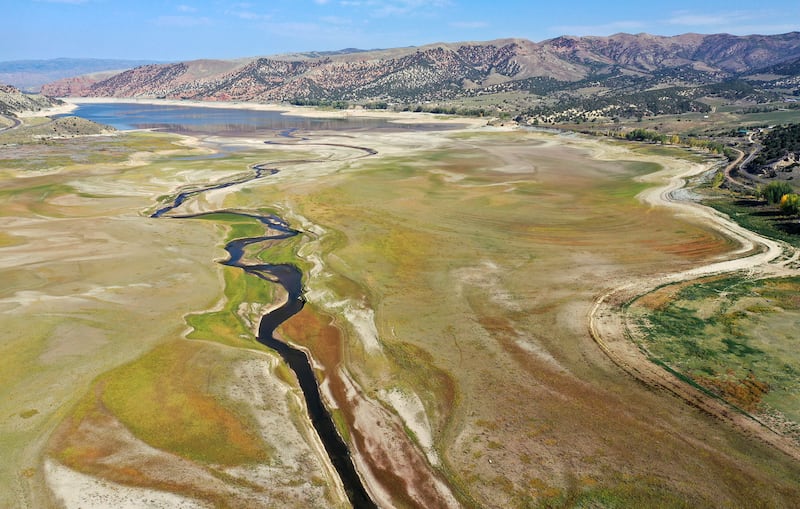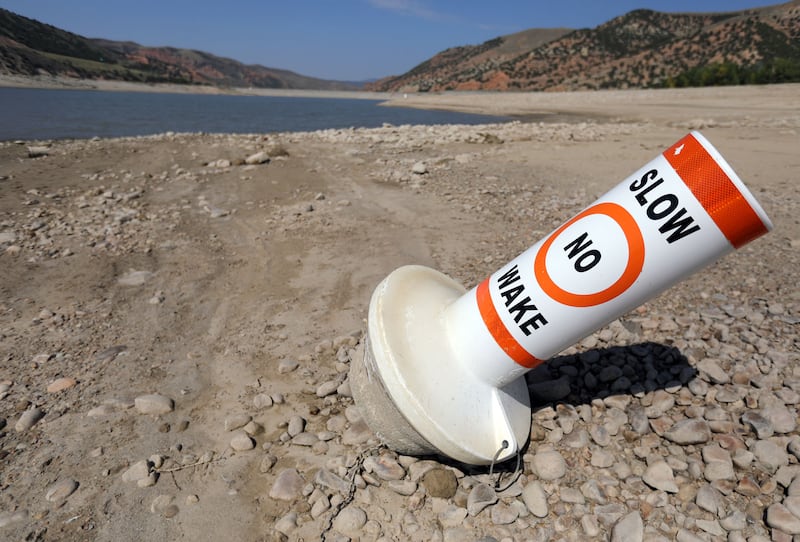Utah may be headed into fall with cooler temperatures and less pressure to water, but the emergency drought situation is by no means over.
The state Drought Coordinator Brian Steed, who is also chairman of the Utah Drought Response Committee, wants leaders to extend the emergency drought declaration set to expire on Oct. 31.
The practical effect of keeping that state emergency declaration in place is to allow the response committee to continue meeting as Utah heads into the snowfall accumulation season.
Steed told a group of lawmakers this week that the situation has become so dire it deserves constant monitoring by a bevy of entities that cuts across a spectrum of drought-challenged sectors such as water quality, agricultural production, the ski industry, tourism and state parks.

“What we are asking to do is to keep monitoring the situation. We won’t know how bad it will be until we start getting snowfall,” Steed told the Natural Resources, Agriculture and Environment Committee.
The request has the nod from both Gov. Spencer Cox and House Speaker Brad Wilson, R-Kaysville. It may require a special session, executive action or some other response from lawmakers.
“Despite recent rains, the state’s water situation remains dire. Extending the drought declaration will allow us to keep our response at its most urgent level,” said Jennifer Napier-Pierce, Cox’s spokeswoman.
Wilson said keeping the response committee intact will ratchet up the state’s ability to respond to the drought.
“We all understand the water situation we are in and how dry it has been,” he said. “I am very open to extending the emergency declaration at least until we get into session to keep everyone at a spot where we are focused on this.”
The Utah Legislature’s next general session kicks off in January, which will also be a key time frame because water managers won’t know reservoir fill levels until then.
How much snowpack has been accumulated and then delivered to reservoirs will be a turning point in state reaction.
Snowfall delivers 95% of Utah’s water and reservoir levels are severely struggling because of dry soils last year that consumed the moisture and caused a poor runoff.
The latest drought report issued by Steed’s Department of Natural Resources indicates that 32 of the state’s largest 42 reservoirs are below 55% capacity.
Even Bear Lake in northern Utah is at 48% capacity, and Jordanelle, built for multiyear storage, is 54% full.
Holdover water storage from previous years is what helped Utah limp through this summer, but even then, the irrigation season was cut short to save water for culinary use. A trio of Utah cities have already run out of water and are being assisted through emergency action.
Forecasters are predicting a drier-than-normal and hotter-than-normal weather pattern the next few months.
People like Steed, Wilson and others hope those forecasts are just plain wrong.
“We are going to plan for the worst and hope for the best,” Steed said.
With Cox out of town this week, Wilson said he is sure the drought and the emergency declaration will be a topic of robust discussion once everyone can get together.
In the meantime, Wilson said he’s taking his own, personal action.
“I am praying for a wet winter. I am going to buy new skis because I am an optimist.”



